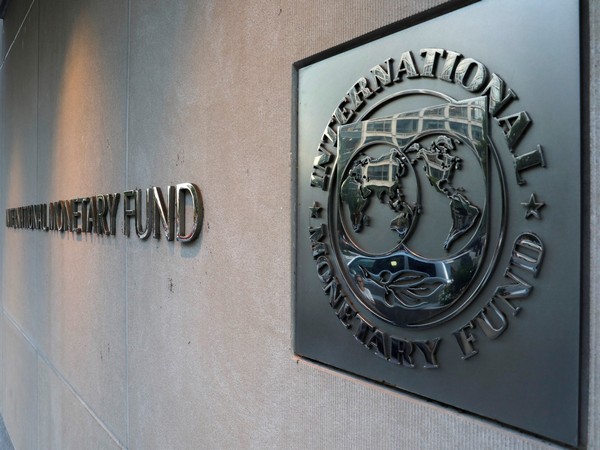
New Dekhi: According to the recent IMF’s “World Economic Outlook: Policy Pivot, Rising Threats”, released on October 23, 2024,IMF maintains India's GDP growth forecast at 7% in 2024-25. In the long term growth trajectory, during the period (2024-29), India will remain a growth leader among the top ten leading economies with a growth rate of 6.6% (2024-29 average) followed by China with a growth rate of 3.9% during the same period.
The global economy is showing remarkable resilience, with growth forecasts for 2024 and 2025 holding steady at 3.2 percent. As deflation continues, global headline inflation is projected to decrease from an annual average of 6.7 percent in 2023 to 5.8 percent in 2024, and further to 4.3 percent in 2025.
Economic growth in advanced economies experienced a significant slowdown and is projected to stabilize, remaining around 1.8 percent in 2024. The growth outlook for emerging markets and developing economies is remarkably stable, hovering at around 3.9 percent in 2024.
The GDP analysis of the top economies shows that India grows fastest as compared with the leading economies. During the period (2024-29 average) India’s growth is projected at 6.6% followed by China at 5.7%, US at 2.2%, Germany at 0.8% and Japan at 0.7%.
India is the 5th largest economy in the World with the GDP size at USD 3889 in 2024 billion. It is expected to surpass Japan in 2026 with the GDP size of USD 4710 billion. India will surpass Germany in 2028 with the GDP size of USD 5723 billion and will be a third largest economy in the World economic system.
The Plethora of structural reforms undertaken during the last 10 years have not only rejuvenated the Indian economy from the daunting impact of coronavirus but also strengthened the economic fundamentals to cope up the recent deepening of geo- political quagmire.According to the recent IMF estimates, India’s size of GDP projected to increase from USD 3.8 trillion in 2024 to USD 6.3 trillion in 2029 and accordingly the per capita income will increase from USD 2698 in 2024 to USD 4195 in 2029.
Since the start of Russia–Ukraine war in 2022, the global economic ties are restructuring in varied dimensions. Countries are rethinking investment decisions such as foreign direct investment and portfolio investments. Further, the recent escalation of the Israel and Hamas conflict to Houthi rebel’s attacks on ships passing through the Red Sea is increasing complexities in the Asia and Europe.
Now, the countries, including Iran and Lebanon, have also become a part of the geo-political conflicts. These deepening geo-political conflicts exacerbate regional instability and will have significant repercussions on energy and food security. The mutual reinforcing force of all the tensions affect inflation, economic growth rate and welfare outcomes. However, despite these challenging headwinds, India’s economy performs robust.
Despite the deepening geo-political conflicts, India’s key economic indicators perform well during the April-September 2024 period. During this period, the IIP grew at 4%, core infra grew at 4.5%, exports grew at 4.8%, bank credit grew at 15%, and GST collections grew at 9.5% year on year basis.
The Sensex has increased by 28% from September 2023 to September 2024, Forex has increased by USD 117 billion from USD 587 billion in Sep 2023 to USD 704 billion Sep 2024, and the CPI Inflation has decreased by 1 percentage point from 5.5% (Apr-Sep 2023 avg.) to 4.5% (Apr-Sep 2024 avg.)The performance of key economic and business indicators reflects that the Indian economy is poised to enter a new growth orbit invigorated by unrelenting support by the Government, RBI and Industry. These positive indicators underscore India's ability to navigate challenges and demonstrate sustained economic progress in the coming times.
India’s trade performance remains robust during the geo-political headwinds, exports make new highs every year. India’s exports (combined merchandise and services) USD 497 billion in 2020-21 to USD 778 billion in 2023-24.
Though the exports trajectory was impacted by pandemic, however, it recovered significantly in the post pandemic years with the support of conducive business environment and ease of doing exports created by the Government. The government has set an ambitious target of India’s exports worth USD 2 trillion by 2030 of which USD 1 trillion will come from merchandise and USD 1 trillion from services.
In conclusions, India is poised to achieve significant economic milestones in the coming years, with a projected GDP of more than USD 4 trillion in FY 2024-25.Going ahead, the continued economic reforms trajectory will further strengthen the economic fundamentals to maintain high economic growth in the coming years.
Strengthening of India’s connectivity with Global Value Chains (GVCs) will help to improve supply side bottlenecks, reduce costs of doing business and address inflationary pressure. Enhanced competitiveness of the Indian economy will attract more and more investments and create more employment opportunities for the growing young population in the country.